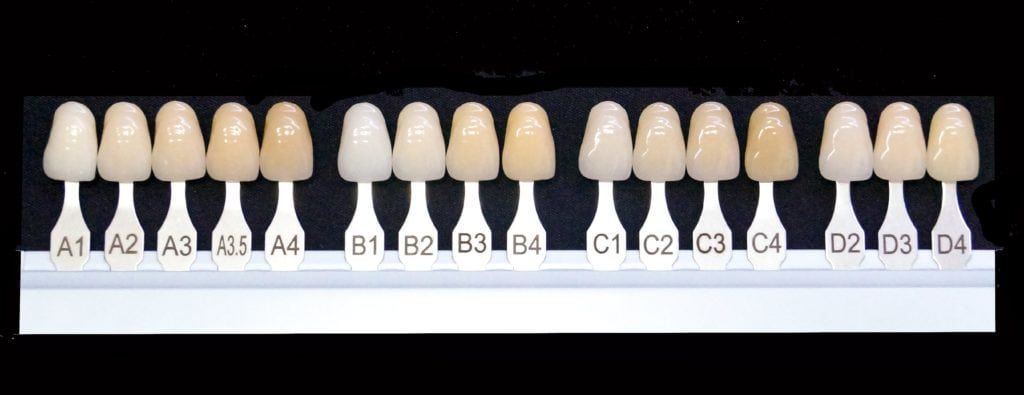There are many reasons why you would want to know the shade of your teeth. Especially with dental treatments, it is important to know what your tooth shade is to achieve optimal results. Treatments such as tooth whitening, veneers, dental implants, crowns, and even fillings are all benefited by knowing your correct tooth shade.
Although every dentist has their own system of determining tooth shade, there is one common method that can be used. This method is using a shade guide as a reference point for teeth comparison. A shade guide has four main categories for comparison based on different shade regions.
The first category, A, shows a sample of teeth ranging from white to reddish brown. The next category, B, shows another sample of teeth ranging from white to reddish yellow. Category C shows a sample of teeth ranging from white to gray. And, finally, category D shows a sample of teeth ranging from white to reddish gray.
Within these categories, there are different shades ranging from light to dark. The variation of the shades depends on the shade guide being used. For example, some shade guides only have four shades for each category, while others may have more. Using a four-shade guide, most people have teeth that are A3 in color, meaning that they are somewhat reddish brown. This is considered the average, natural tooth shade.
Nowadays, however, many people want their teeth to look whiter and brighter and are requesting that their A3 teeth improve in color. When undergoing whitening treatments, many people request that their teeth be brought to a B1 level. The B1 shade is commonly thought to be the whitest shade, but this is not the case.
The B1 shade used to be the whitest shade for natural teeth. Now, with the introduction of bleaching products, the once natural shade has become much lighter. There are now colors even lighter than the lightest B1 shade. These colors are often referred to as Hollywood shades, since they are whiter than any naturally occuring teeth.
In addition to using shade guides to determine the color of your teeth for possible whitening procedures, they can also be used for other dental treatments such as dental veneers. Veneers are used when your teeth are too discolored or damaged for a whitening treatment to be effective. They are a thin layer of porcelain that is adhered to your existing teeth with the intent of matching them.
In the case of veneers, your tooth shade is important for one of two reasons. The first reason being that if you are only putting veneers on one or even a couple of teeth, you will want them to blend in with your existing teeth. Thus, your tooth shade must be determined so the veneers can be manufactured in that shade and blend accordingly. The second reason would be if you are getting veneers on all your teeth and you desire these veneers to have a whiter color than your existing teeth. In this case, you would need to know your tooth shade to know the level of whitening you desire.












